Complete Solutions to A. Only one option is correct (JEE Advance) of chapter RAY OPTICS of Class 11 book with complete answers and questions
| Class 11 | PHYSICS |
| Chapter | RAY OPTICS |
| DC PANDEY MASTER PROBLEM PACKAGE | A. Only one option is correct (JEE Advance) |
| Number Of Questions | 73 |
| Academic Year | 2023-24 |
A plane mirror is placed at origin parallel of y-axis, facing the positive x-axis. An object starts from (2m, 0, 0) with a velocity of `(2hat(i)+2hat(j))m//s`. The relative velocity of image with respect to object is along
View SolutionAs the position of an object (u) reflected from a concave mirror is varied, the position of the image (v) also varies. By latting the u changes from 0 to `+ oo` the graph between v versus u will be
View SolutionA 2 cm diameter coin rests flat on the bottom of a bowl in which the water is 20 cm deep `(mu_(w) = 4//3)`. If the coin is viewed directly from above, what is its apparent diameter ?
View SolutionRefraction takes place at a convex spherical boundary separating air-glass medium. For the image to be real, the object distance `(mu_(g) = 3//2)`
Note Object lying in the glass.
View SolutionLight is incident normally on face AB of a prism as shown in Figure. A liquid of refractive index `mu` is placed on face AC of the prism. The prism is made of glass of refractive indes `3//2` . Find the limits of `mu` for which total internal reflection takes place on the face AC.
(A)`mu gt (sqrt(3))/(2)` (B)`(3 sqrt(3))/(4) gt mu ` (C)`mu gt sqrt(3)` (D)`mu lt (sqrt(3))/(2)`
View SolutionAn infinitely long rod lies along the axis of a concave mirror of focal length f. The near end of the rod is distance `u gt f` from the mirror. Its image will have length
View SolutionTwo point sources `S_(1)` and `S_(2)` are 24 cm apart. What should a convex lens of focal length 9 cm be placed between them so that the images of both sources formed at the same place ?
View SolutionTwo identical thin planoconvex lenses of refractive index n are silvered, one on the plane side and other on the convex side. The ratio of their for lengths is
View SolutionA refracting surface is represented by the equation `x^(2)+y^(2) = a^(2)`. A ray travelling in negative x-directed towards positive y-direction after reflection from the surface at point P. Then co-ordinates of point P are

View SolutionAn object infront of a concave mirror of focal length f. A virtual image is formed with a magnification of 2. To obtain a real image of same magnification the object has to be moved by a distance
View SolutionFor an equilateral prism, it is observed that when a ray strikes grazingly at one face it emerges grazingly at the other. Its refractive index will be
View SolutionA convex lens of focal length 30 cm forms a real image three times larger than the object on a screen. Object and screen are moved until the image becomes twice the size of the object. If the shift of the object is 6 cm. The shift of screen is
View SolutionA real image is formed by a convex lens. Then it is put in contact with a concave lens and again a real image is formed. This image will
shift towards the lens system
shift away from the lens system
remain in its original position
shift to infinity
View SolutionA convex lens is in contact with a concave lens. The magnitude of the ratio of their powers is `(3)/(2)`. Their equivalent focal length is 30 cm. What are their individual focal lengths?
View SolutionWhat is the minimum value of the refractive index for a `90^(@)-45^(@)-45^(@)` prism which is used to deviate a beam through `90^(@)` by total internal reflection ?
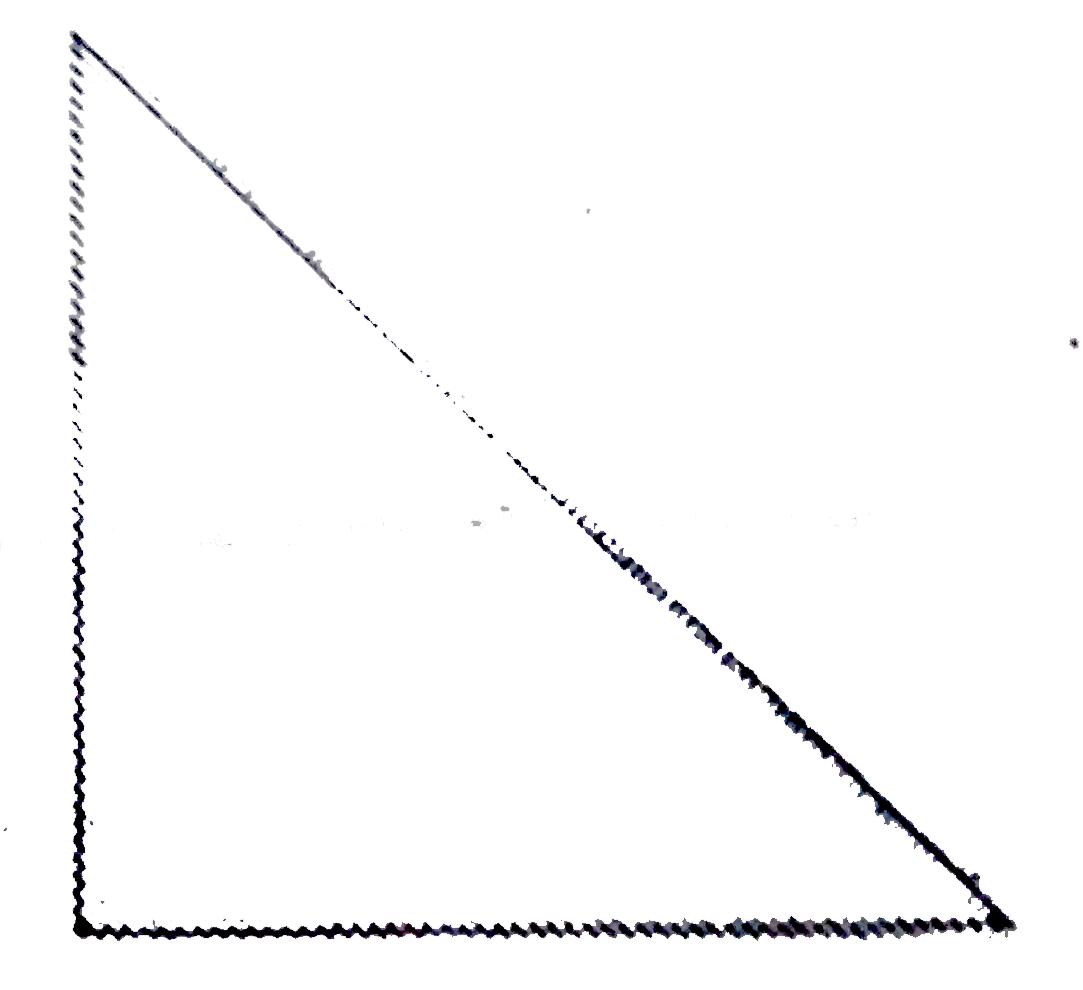
View Solution
An object O is placed in front of a small plane mirror `M_(1)` and a large convex mirror `M_(2)` of focal length `f`. The distance between O and `M_(1)` is x, and the distance between `M_(1)` and `M_(2)` is y. The images of O forned by `M_(1)` and `M_(2)` coincide. The magnitude of f is
View SolutionAn object is kept at a distance of `16 cm` from a thin lens and the image formed is real. If the object is kept at a distance of `6 cm` from the lens, the image formed is virtual. If the sizes of the images formed are equal, the focal length of the lens will be
View SolutionA plane mirror is placed at the bottom of a tank containing a liquid of refractive index `mu`. P is a small object at a height h above the mirror. An observer observes P and its image in the mirror. The apparent distance between two will be

View SolutionA real image of a point object O was formed by an equi-convex lens of focal length f and the magnification was found to be unity. Now the lens is cut into two symmetrical pieces as shown by the dotted line and the right part is removed. The position of the image formed by the remaining part is at
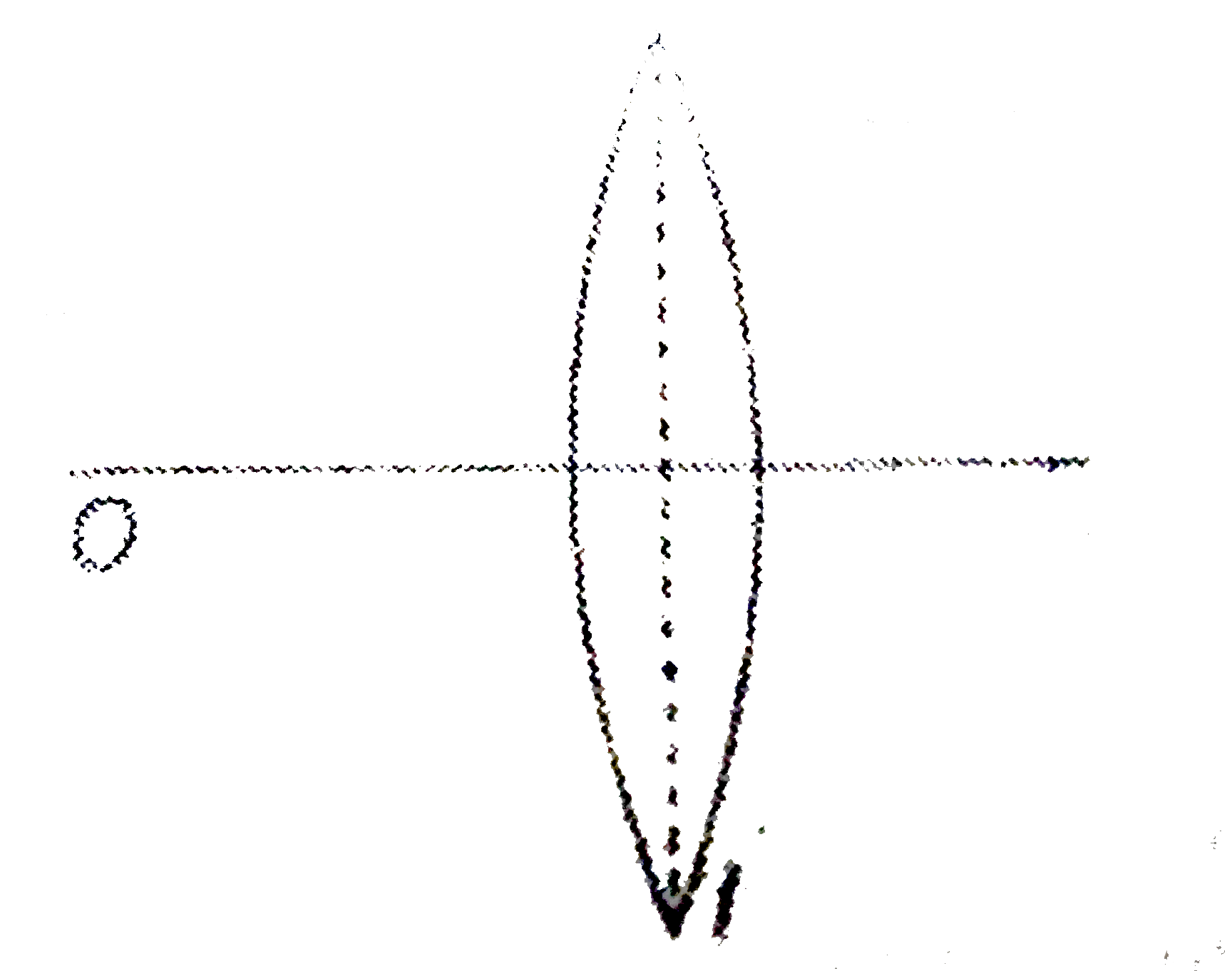
View SolutionOne side of a glass slab is silvered as shown. A ray of light is incident on the other side at angle of incidence `i = 45^(@)`. Refractive index of glass a is given as 1.5. The diviation of the ray of light from its initial path when it comes out of the slab is
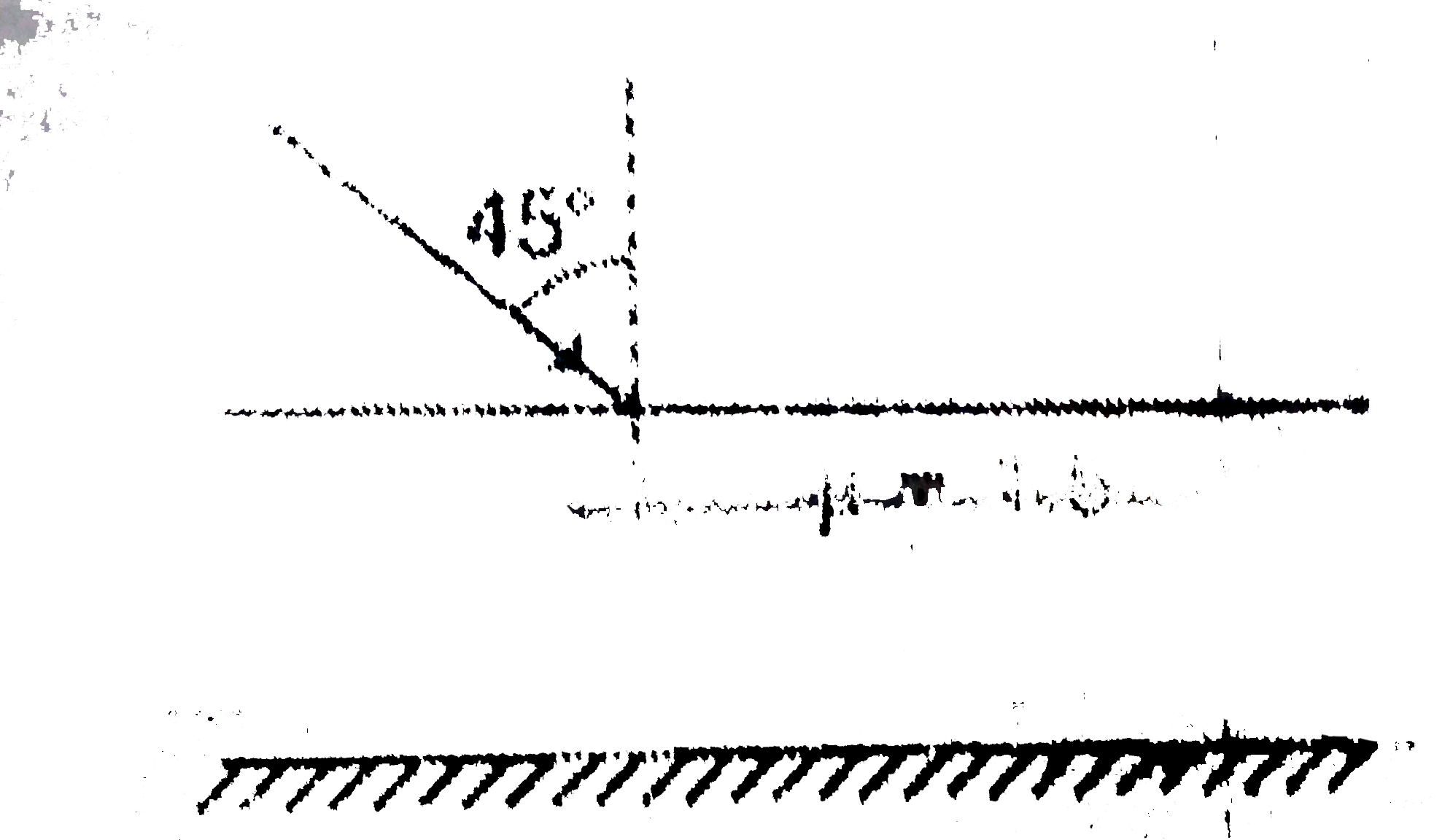
View SolutionA plastic hemisphere has a radius of curvature of 8 cm and an index of refraction of 1.6. ON the axis halfway between the plane surface and the spherical one (4 cm from each) is a small object O. The distance between the two images when viewed along the axis from the two sides of the hemisphere is approximately
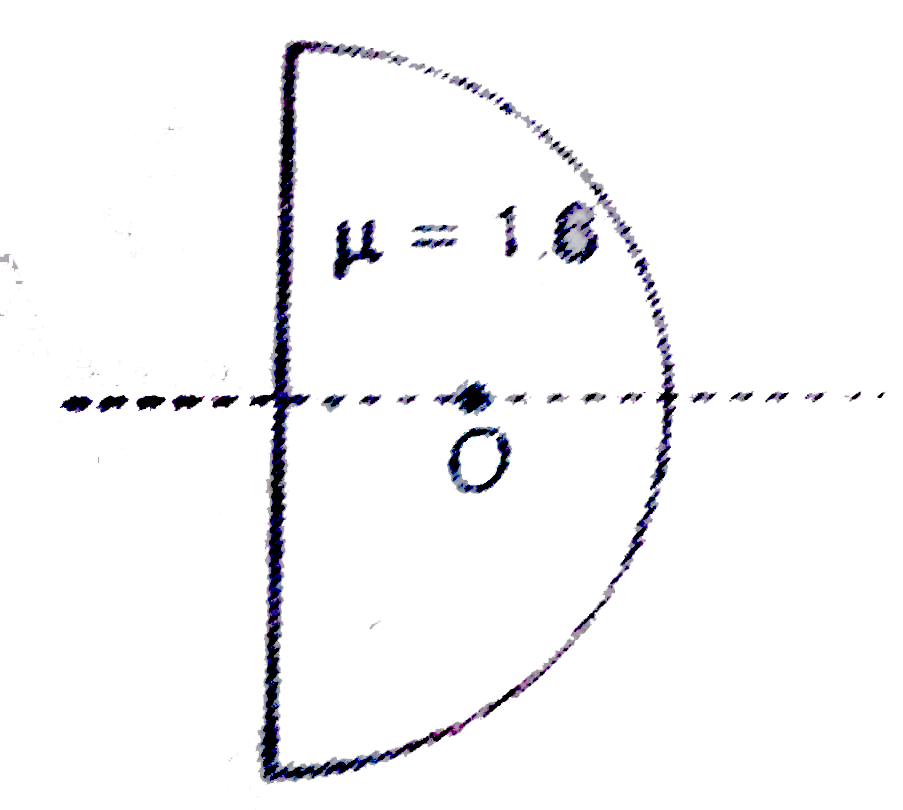
View SolutionA circular beam of light of diameter `d = 2 cm` falls on a plane refractive of glass. The angle of incidence is `60^(@)` and refractive index of glass is `mu = 3//2`. The diameter of the refracted beam is
View SolutionConsider the situation shown in figure. Water `(mu_(w) = (4)/(3))` is filled in a breaker upto a height of 10 cm. A plane mirror is fixed at a height of 5 cm from the surface of water. Distance of image from the mirror after reflection from it if an object O at the bottom of the beaker is
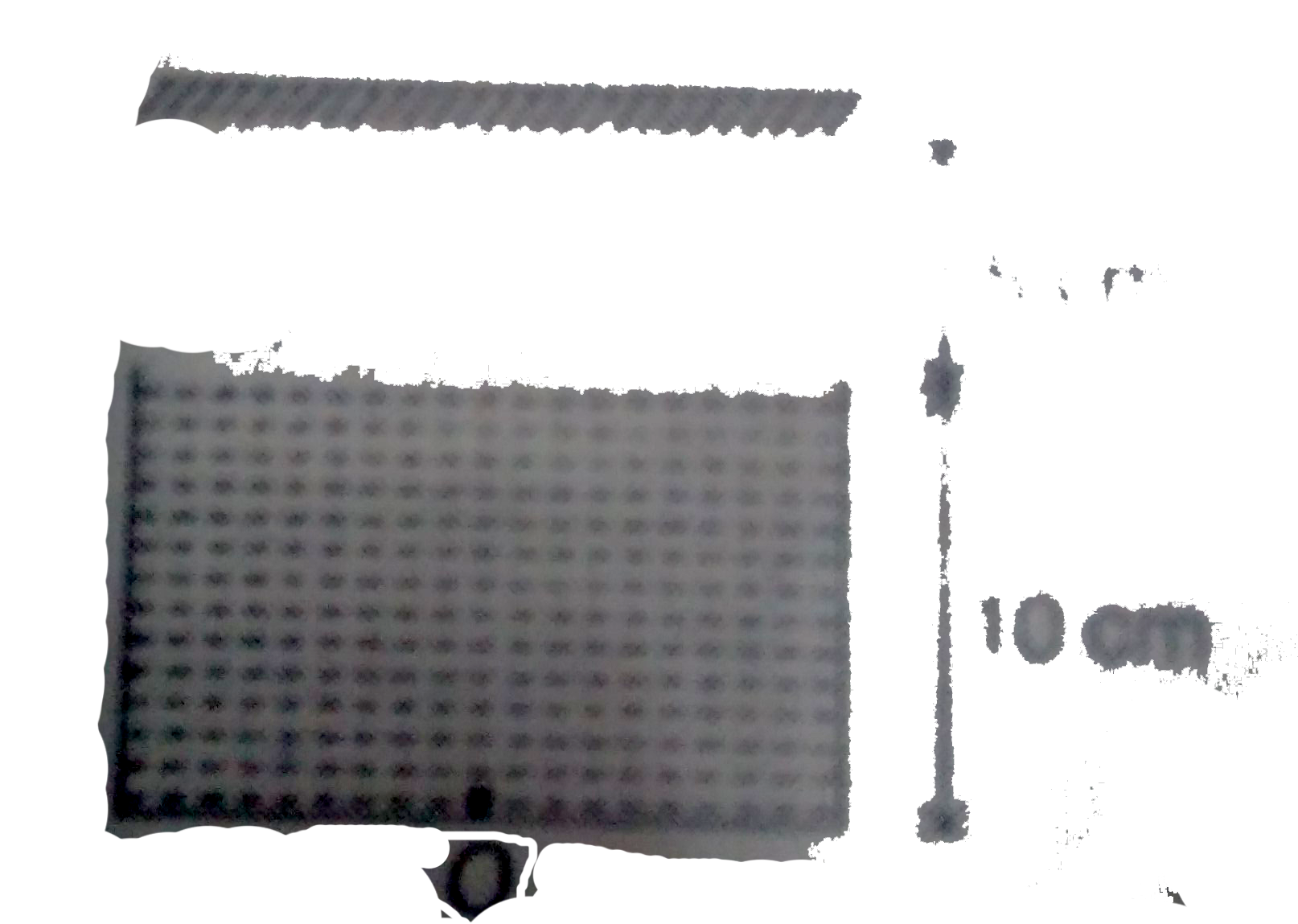
View SolutionA ray of light is incident on a glass sphere of refractive index 3/2. What should be the angle of incidence so that the ray which enters the sphere does not come out of the sphere ?
View SolutionA prism having an apex angle `4^(@)` and refractive index 1.5 is located in front of a vertical plane mirror as shown in figure. Through what total angle is the ray is deviated after reflection from the mirror ?
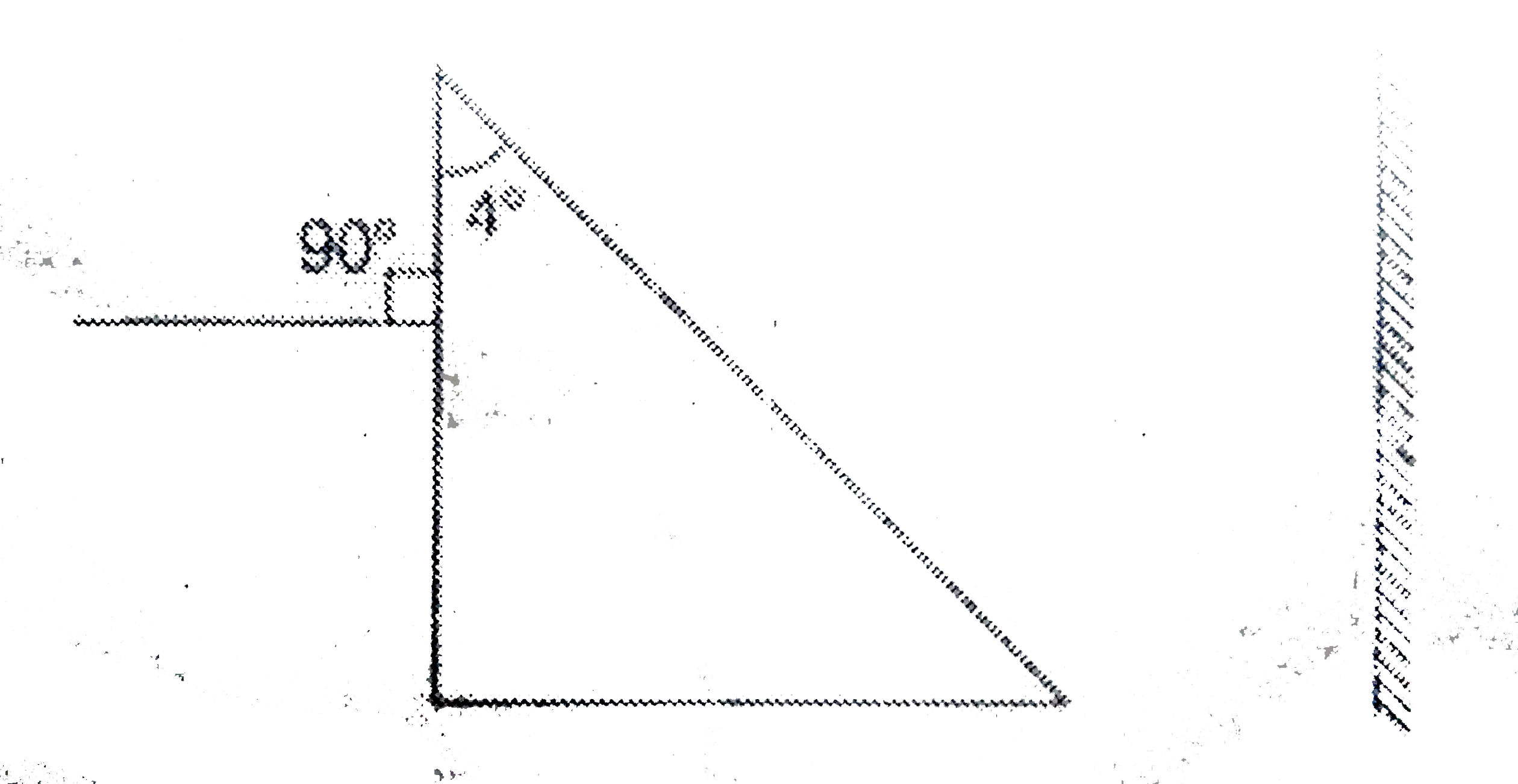
View SolutionA plano convex lens fits exactly into a plano concave lens. Their plane surfaces are parallel to each other. If the lenses are made of different materials refractive indices `mu_(1)` and `mu_(2)` and R is the radius curvature of the curved surface of the lenses, the focal length of the combination is
View SolutionOptic axis of a thin equiconvex lens is the x-axis. The co-rodinates of a point object and its image axis `(-40 cm, 1 cm)` and `(50 cm, -2 cm)` respectively. Lens is located at
View SolutionA plano convex glass lens `(mu_(g) = 3//2)` of radius curvature `R = 10 cm` is placed at a distance of b from a concave lens of focal length 20 cm. what should the distance 'a' of a point object O from the plat convex lens so that the position of final image always at same distance from concave lens
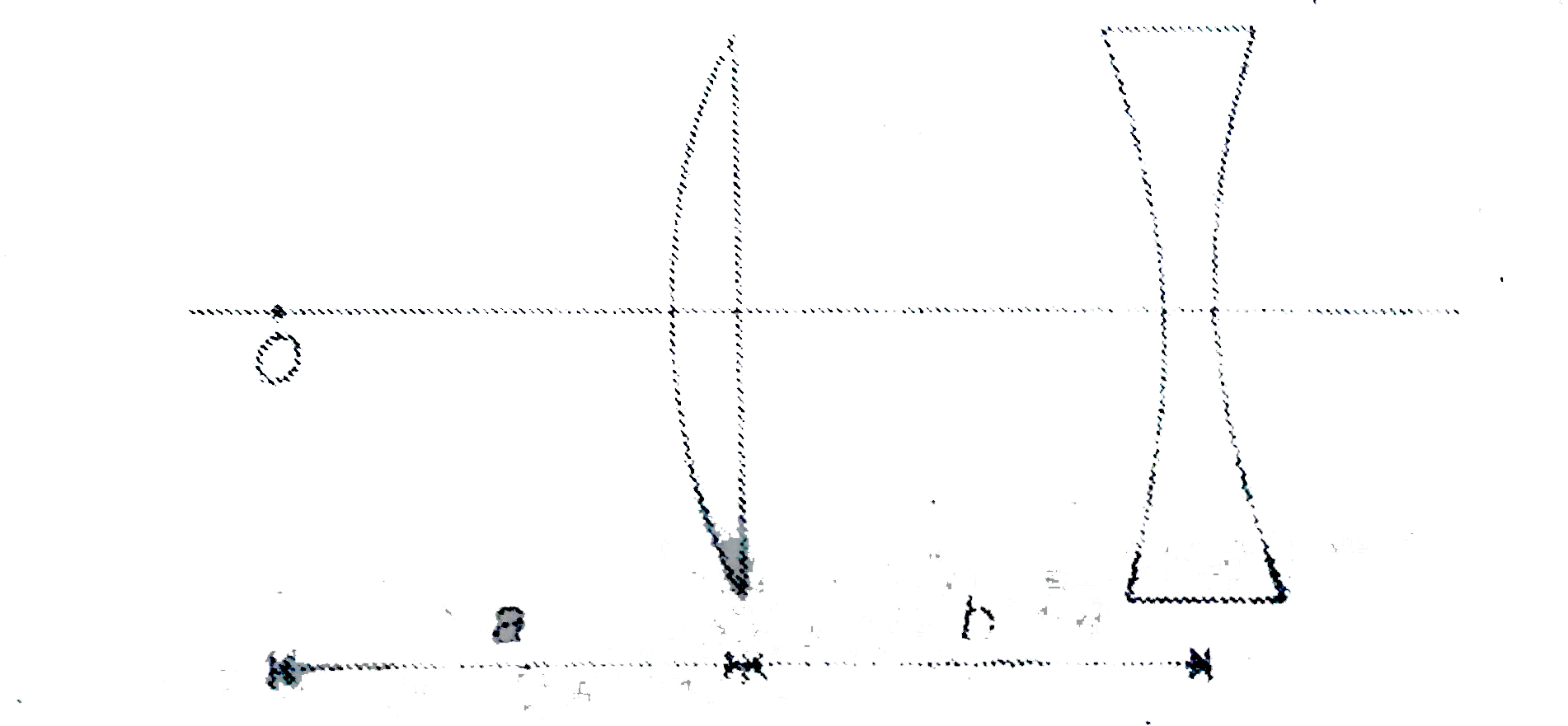
View SolutionA convex lens of focal length 10 cm is painted black at the middle portion as shown in figure. An object placed at a distance of 20 cm from the lens. Then
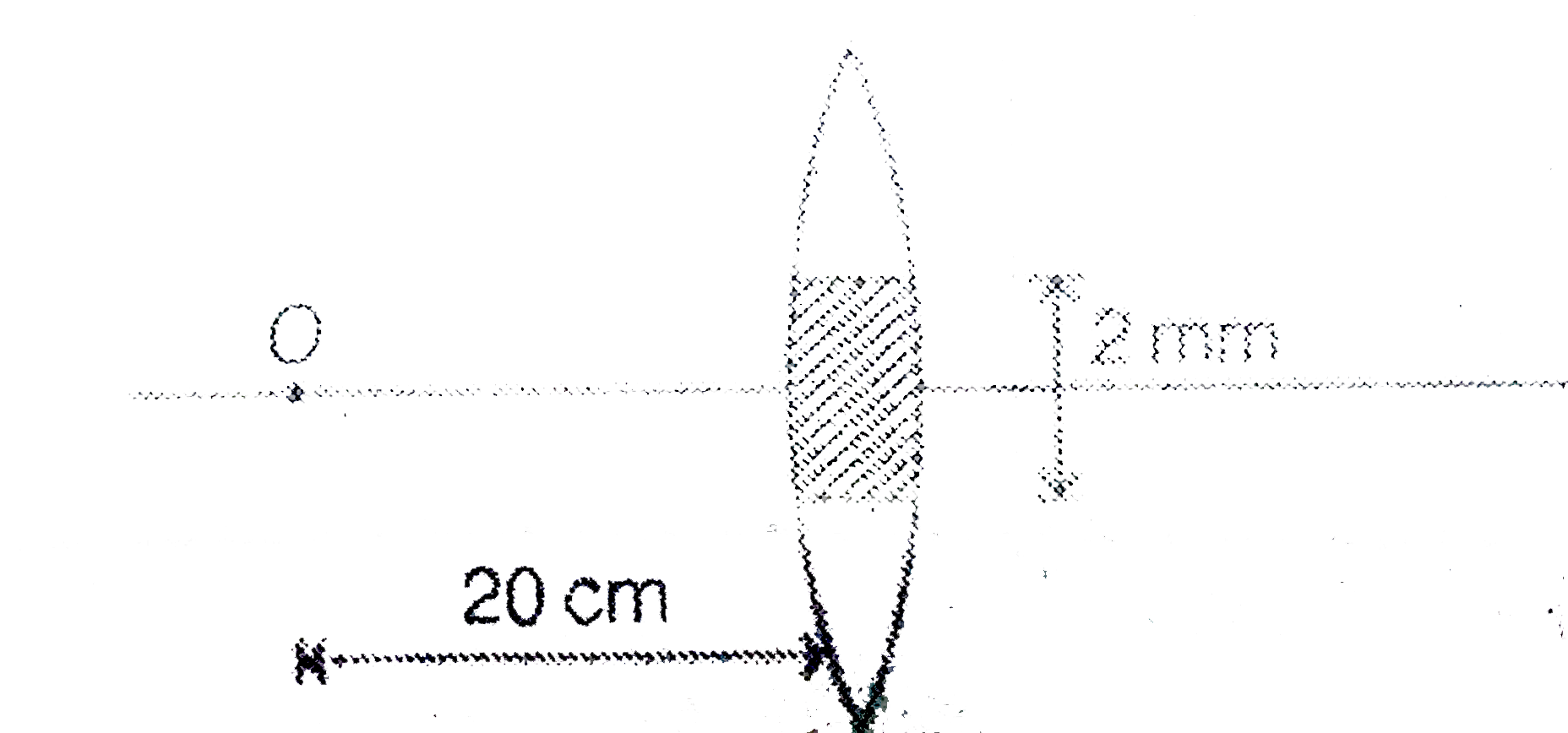
View SolutionA point object is placed on the optic axis of a convex lens of focal length f at a distance of 2f to the left it. The diameter of the lens d. An eye is placed are distance of 3f to the right of the lens and a distance below the optic axis. The maximum value of h to the image is
View SolutionA point object O is placed at a distance of 20 cm from a convex lens of focal length 10 cm as shown in figure. At what distance x from the lens should a concave mirror of focal length 60 cm, placed so that final image coincides with the object ?

View SolutionTwo thin symmetrical lenses of different nature and of different material have equal radii of curvature `R = 15 cm`. The lenses are put close together and immersed in water `(mu_(w) = (4)/(3))`. The focal length of the system in water is 30 cm. The difference between refractive indices of the two lenses is
View SolutionA cubic container is filled with a liquid whose refractive index increases linearly from top to bottom. Which of the following represents the path of a ray of light inside the liquid ?
View SolutionAn object is placed at `A(OA gt f)`. Here, f is the focal length of the lens. The image is formed at B. A perpendicular is erected at O and C is chosen such that `/_BCA = 90^(@)`. Let OA = a, OB = b and OC = c. Then the value of f is
View SolutionThe x-z plane separates two media A and B of refractive indices `mu_(1) = 1.5` and `mu_(2) = 2`. A ray of light travels from A to B. Its directions in the two media are given by unit vectors `u_(1) = a hat(i)+b hat(j)` and `u_(2) = c hat(i) +a hat(j)`. Then
View SolutionThe sides of an isosceles right prism are coated with a reflecting coating. A ray of light falls on the hypotenuse at an arbitrary angle i. For what value of i the ray leaving the prism is parallel to the incident ray ?
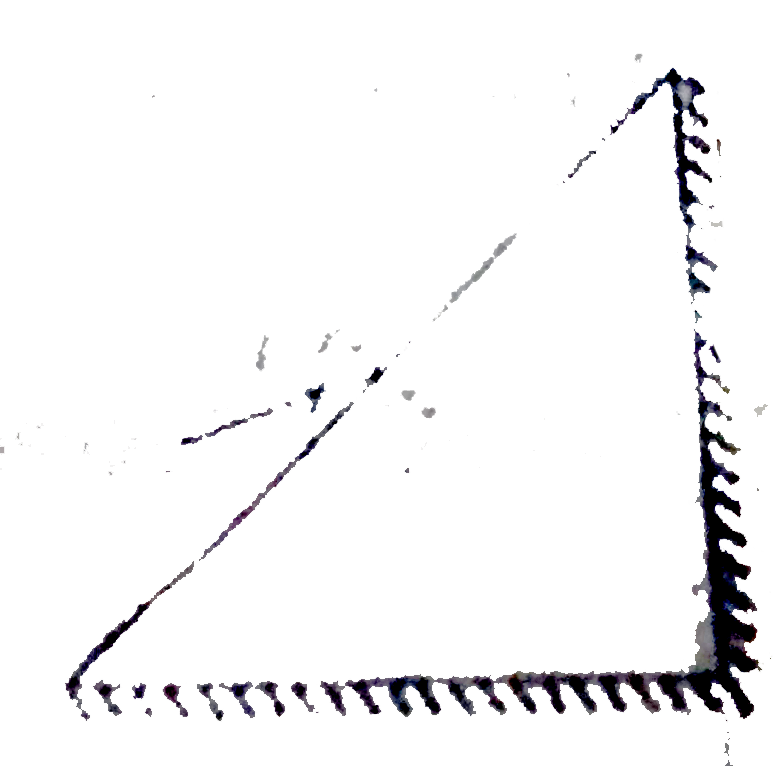
View SolutionA point object is placed at a distance of 20 cm from a glass slab, H=18cm, half immersed in water as shown in figure. The distance between two images when seen from the other side of the slab is `(mu_(g) = (3)/(2) and mu_(w) = (4)/(3))`
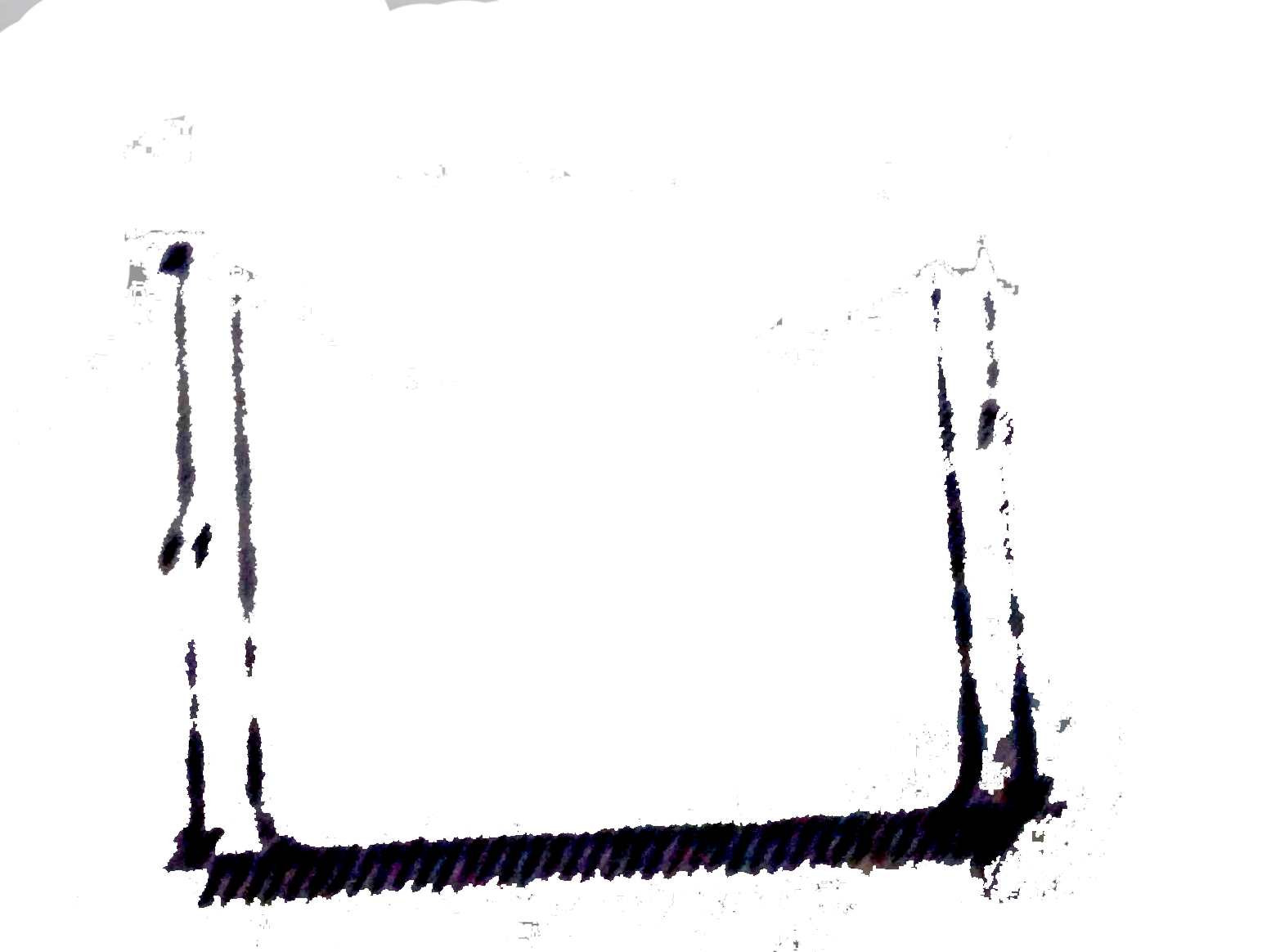
View SolutionA point source S is placed at a height h from the bottom of a vessel of height `H(lt h)`. The vessel is polished at the base. Water is polished at the base. Water is gradually filled in the vessel at a constant rate `alpha m^(3)//s`. The distance d of image of the source after reflection from mirror from the bottom of the vessel varies with time t as
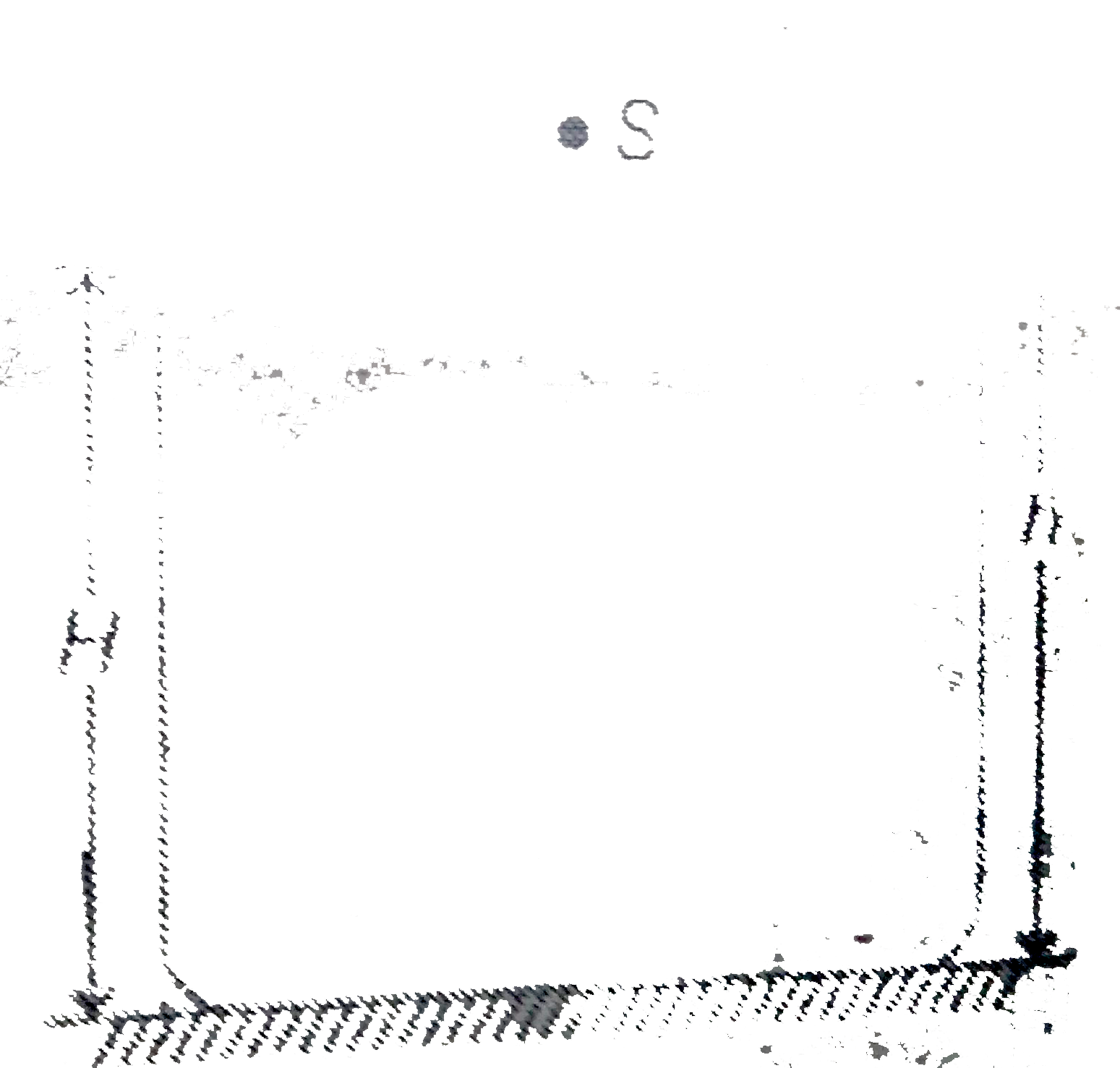
View SolutionA point object O is placed slightly above the centre C of a glass sphere as shown in figure. If it is viewed almost normally from above the sphere, its image is seen
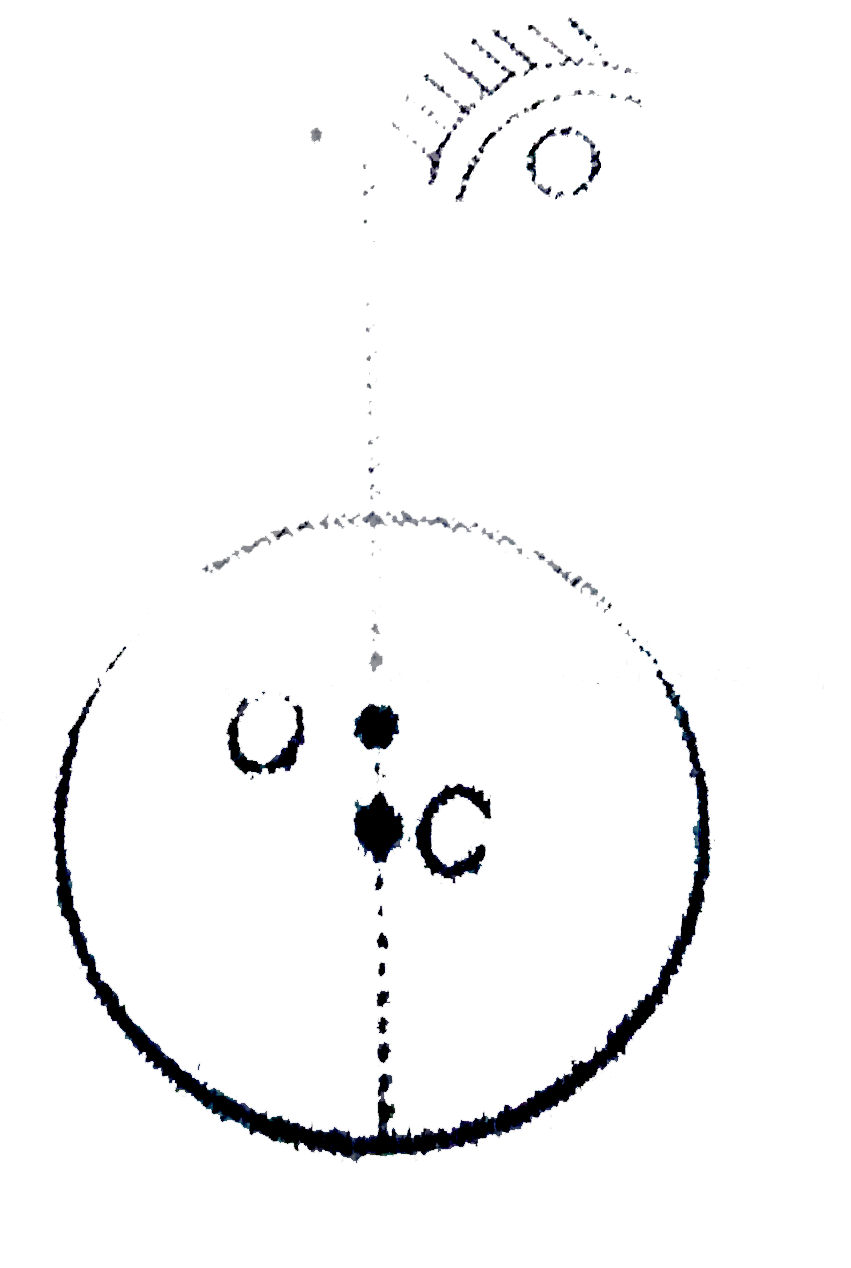
View SolutionIn the figure shown, `mu_(1) gt mu_(2) gt mu_(3)`. What are the limits of angle i so that it is neither get total internal reflection at AB nor at CD ?
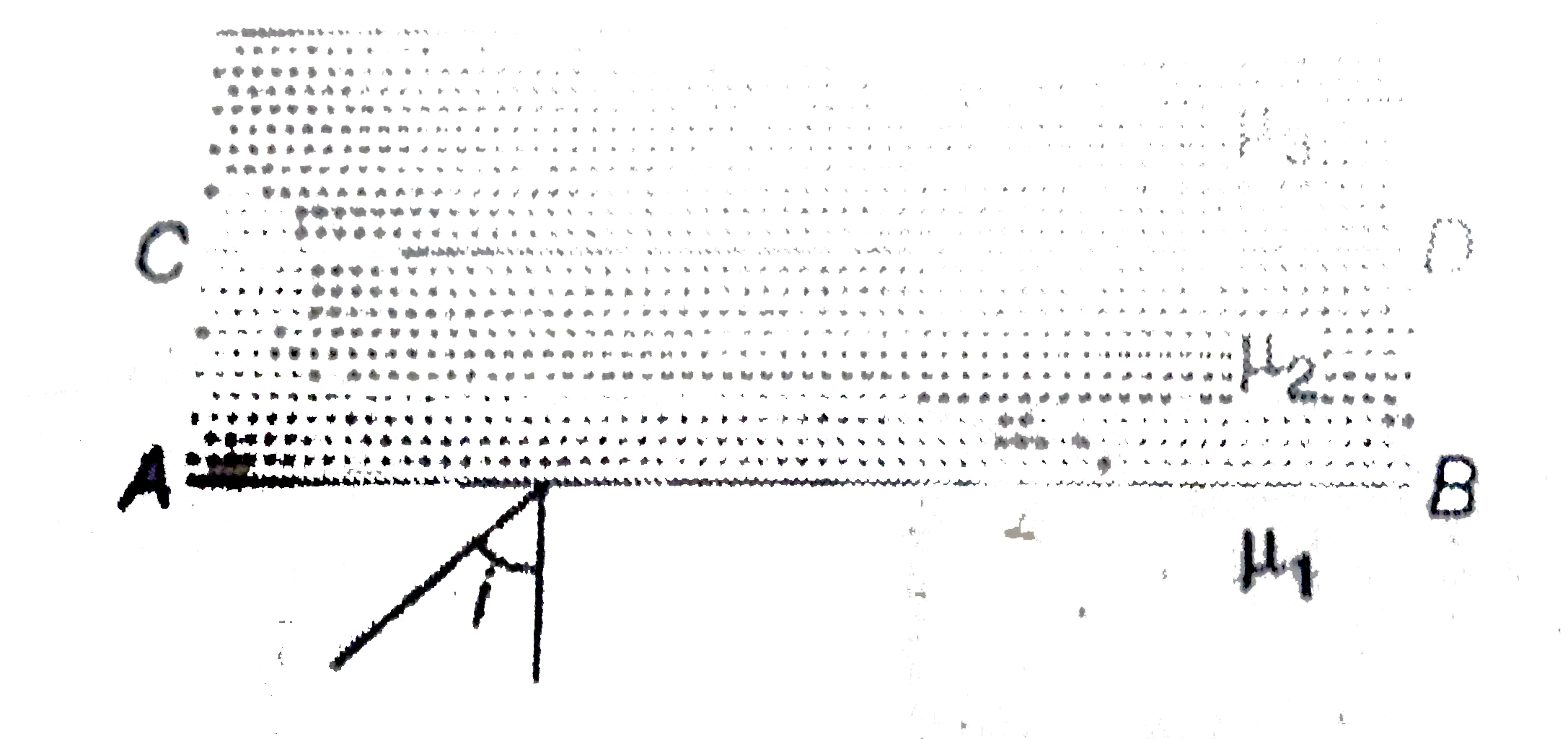
View SolutionA bi-convex lens is cut from the middle as shown in figure. Refractive index of material of lens is `(3)/(2)`. Now lens-1 (as shown in figure) is immersed in a liquid of refractive index `mu_(0)`. By doing so it is observed that its focal length becomes equal to lens-2. What is the value of `mu_(0)` ?
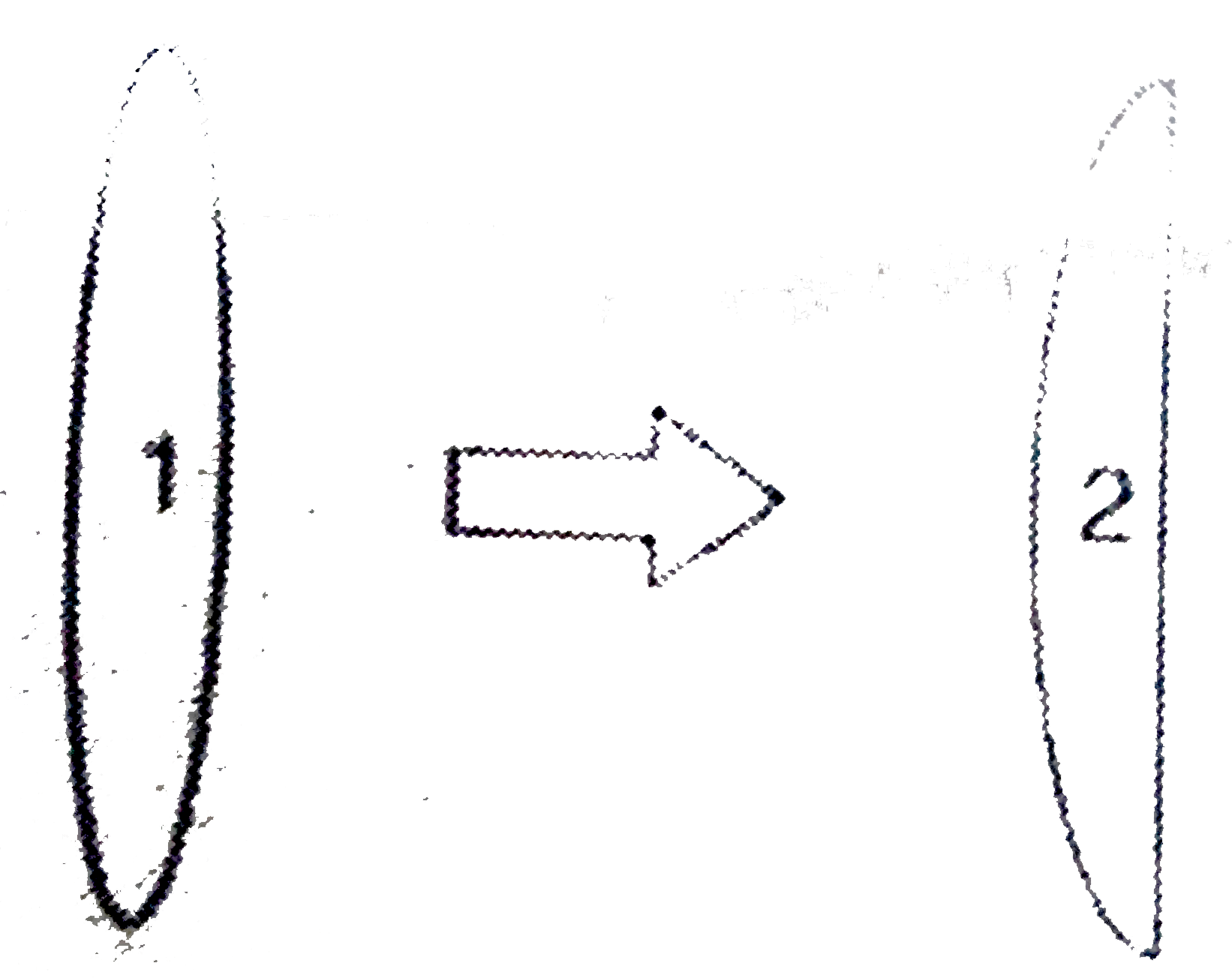
View SolutionA hemishperical surface of radius R and refractive index `mu = 1.5` is polished as shown. At what distance x from point P a point object O be placed so that its image coincides with the object itself?
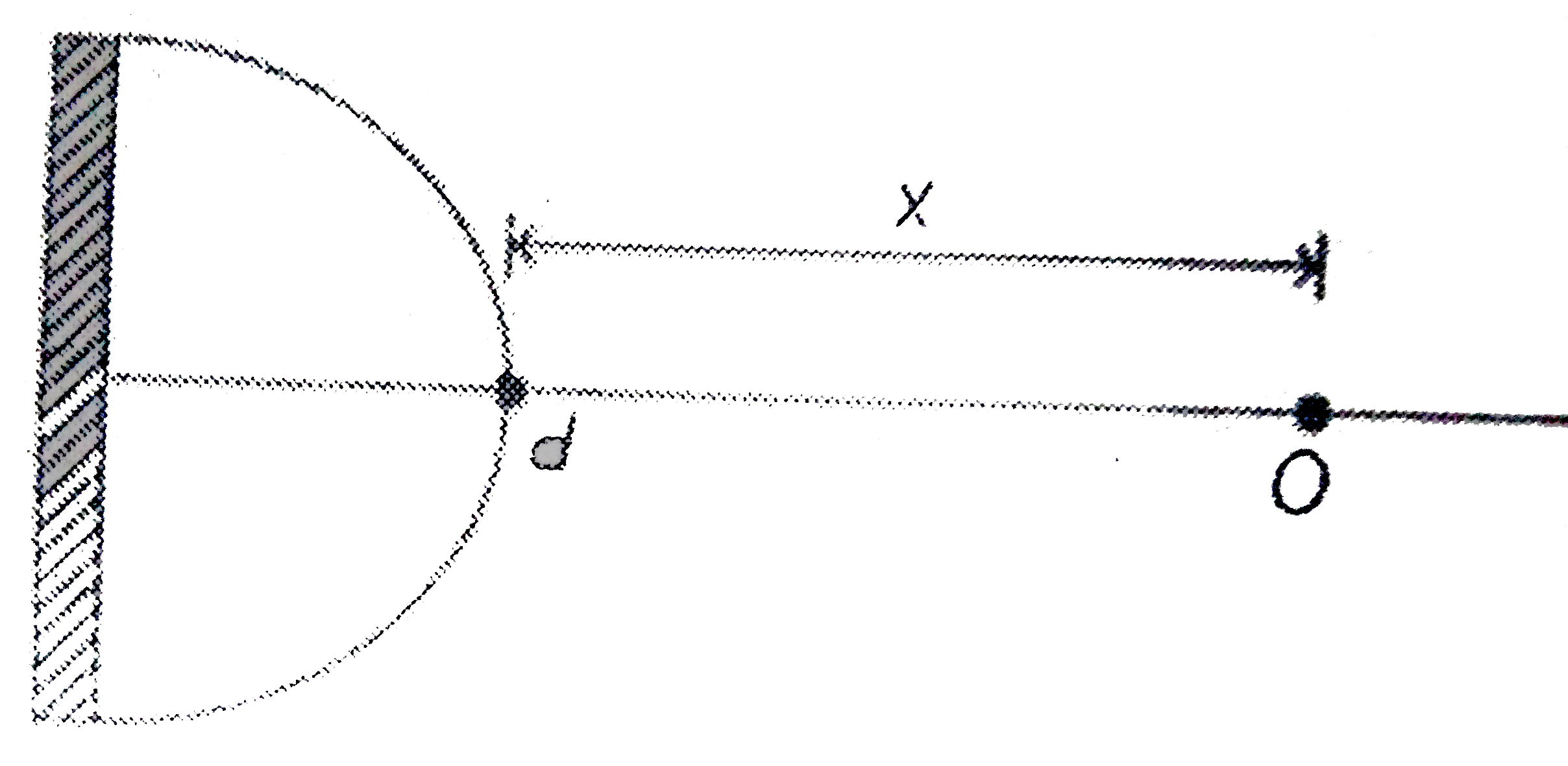
View SolutionA ray is travelling along x-axis in negative x-direction. A plane mirror is placed at origin facing the ray. What should be the angle of plane mirror with the x-axis so that the ray of light after reflecting from the plane mirror passes through point `(1m, sqrt(3)m)` ?
View SolutionLiquid is filled vessel of height `(2H)/(3)`. At the bottom of the vessel there is a spot P and a hole from which liquid is coming out. Let d be the distance of image of P from an eye at height H from bottom at an instant when level of liquid in vessel is x. If we plot a graph between d and x it be like

View SolutionIn displacement method distance of object from convex lens of focal length 20 cm in one position 60 cm. Then
View SolutionTwo mirrors are inclined at angle `theta` as shown in figure. Light rays are incident parallel to one of mirrors. Light will start retracing its path after the reflection if

View SolutionA plane mirror is moving with velocity `4 (hat i) + 4 (hat j) + 8 (hat k)`. A point object in front of the mirror moves with a velocity `3 (hat i) + 4 (hat j) + 5 (hat k)`. Here, `hat k` is along the normal to the plane mirror and facing towards the object. The velocity of the image is
View SolutionA square ABCD of side 1mm is kept at distance 15cm in front of the concave mirror as shown in Figure. The focal length of the mirror is 10cm. The length of the perimeter of its image will be

View SolutionA point object on the principal axis at a distance 1.5 cm in front of concave mirror of radius of curvature 20 cm has velocity 2mm/s is perpendicular to the principal axis. The velocity of image at that instant will be
View SolutionA ray of light is incident on a parallel slab of thickness t and refractive index n. If the angle of incidence `theta` is small, than the lateral displacement in the incident and emergent ray will be
View SolutionA beam of diameter 'd' is incident on a glass hemisphere as shown. If the radius of curvature of the hemisphere is very large in comparison to d, then the diameter of the beam at the base of the hemisphere will be
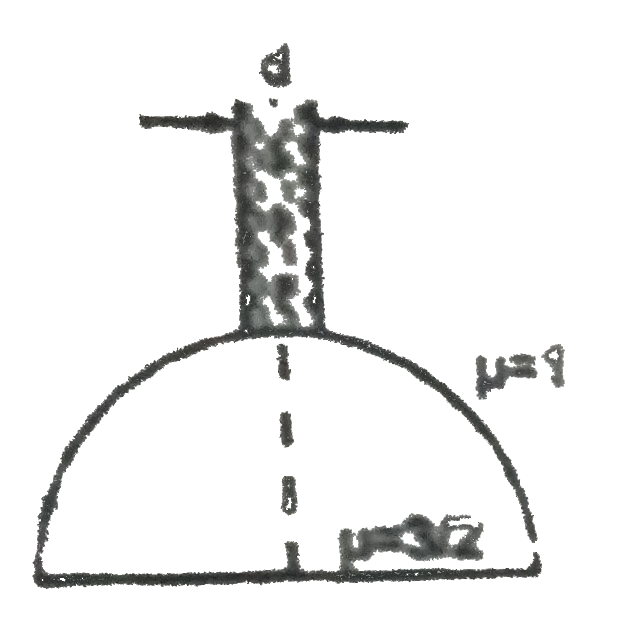
View SolutionA light ray `I` is incident on a plane mirror `M`.The mirror is rotated in the direction as shown in the figure by an arrow at frequency `(9)/(pi) "rev"//"sec"`,The light reflected by the mirror is received on the wall `W` at a distance `10m`from the axis of rotation .When the angle of incidence becomes `37^(@)`find the speed of the spot (a point) on the wall?
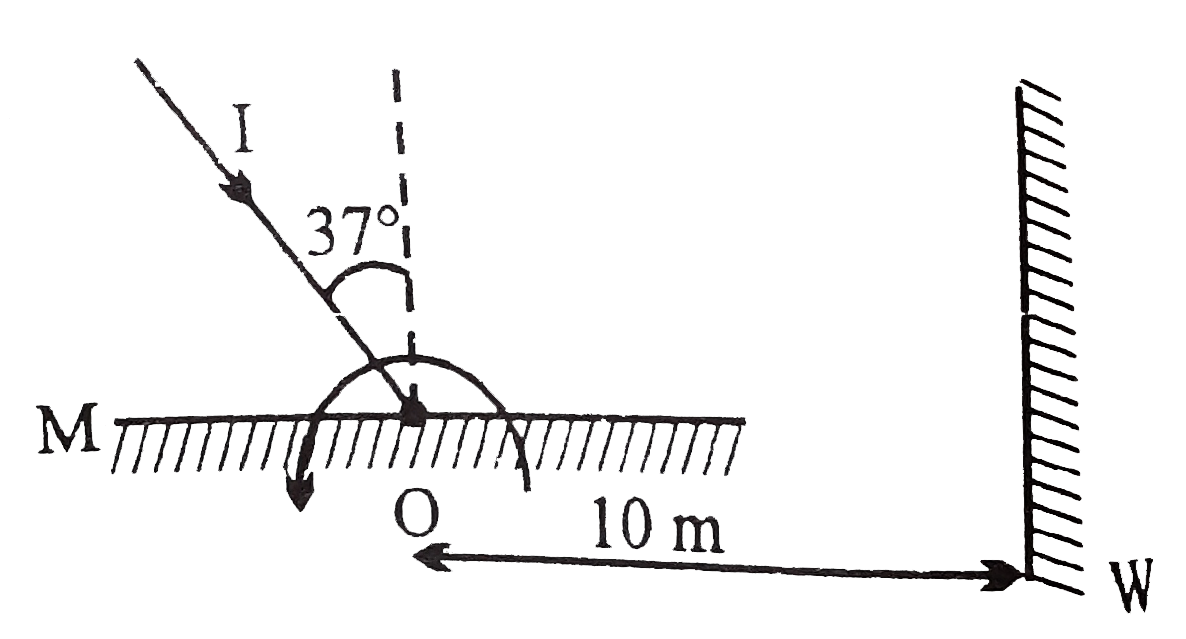
View SolutionA bird is flying up at an angle `sin^(-1)(3//5)` with the horizontal. A fish in a pond looks at that bird when it is vertically above the fish. The angle at which the bird appears to fly (to the fish) is `[mu_(w) = 4//3]`
View SolutionA man of height 'h' is walking away from a street lamp with a constant speed 'v'. The height of the street lamp is 3h. The rate at which the length of the man's shadow is increasing when he is at a distance 10 h from the base of the street lamp is
View SolutionA man is walking under an inclined mirror at a constant velocity v along the x-axis. If the mirror is inclined at an angle `theta` with the horizontal then what is the velocity of the image ?

View SolutionA parallel sided block of glass of refractive index 1.5 which is 36 mm thick rests on the floor of a tank which is filled with water (refractive index = 4/3). The difference between apparent depth of floor at A and B when seen from vertically above is equal to

View SolutionAn object is placed at a distance of 15cm from a convex lenx of focal length 10cm. On the other side of the lens, a convex mirror is placed at its focus such that the image formed by the combination coincides with the object itself. The focal length of the convex mirror is
View SolutionA converging lens of focal length `20cm`and diameter`5cm`is cut along the line`AB`.The part of the lens shown shaded in the diagram is now used to form an image of a point `P`placed `30cm`away from it on the line`XY`.Which id perpendicualr to the plane of the lens.The image of`P`will be formed.

View SolutionA point object is kept at the first focus of convex lens ,if the lens starts moving towards right will a constant velocity,th image will
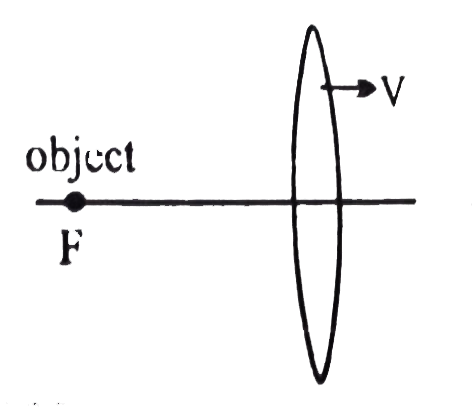
View SolutionA convex lens of focal length f and a plane mirror are y distance apart. An object O is kept on the principal axis of the lens at a distance x from the lens. The values of x and y for the final image of O to fall exactly (position and size) on the object O are :

View Solution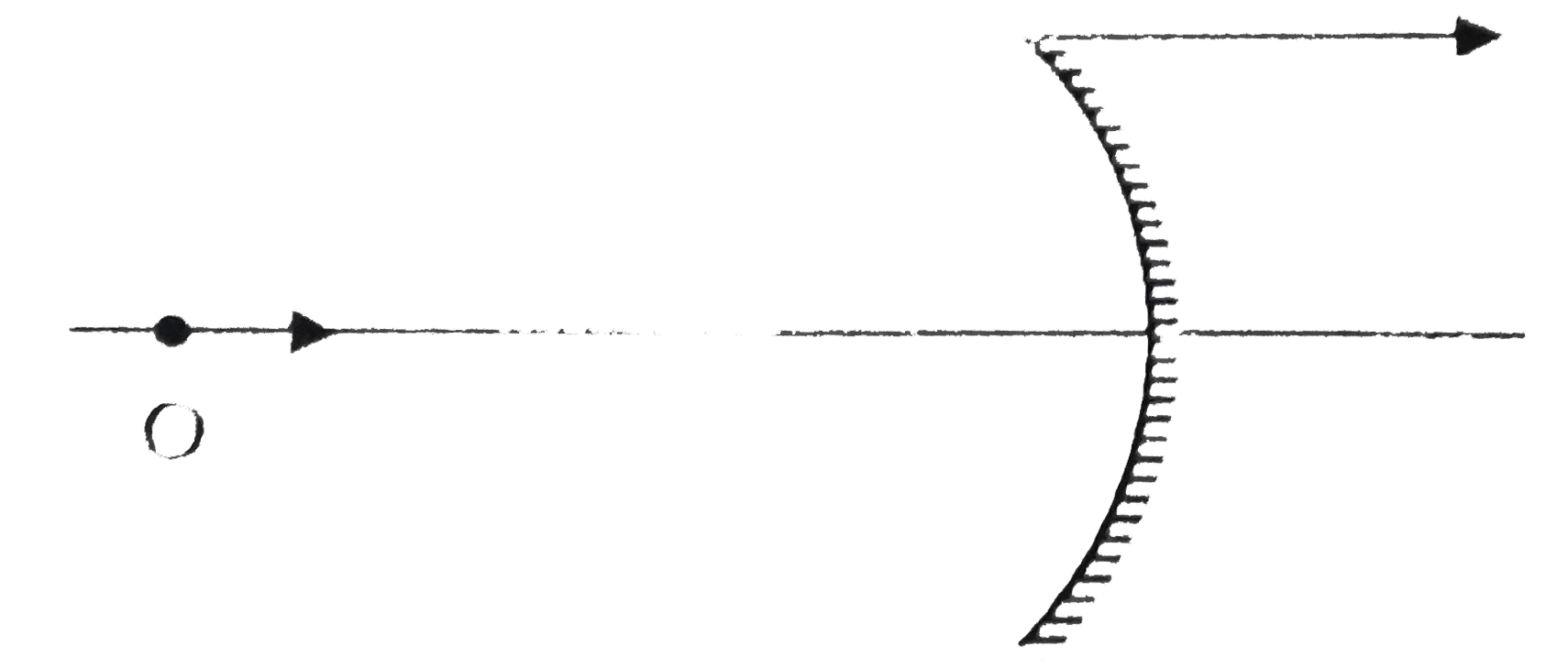
An object kept on the principle axis is moving in the sme directions as that of mirror as shown in the figure. Speed of object and mirror is `10(m)/(s)` and `(40)/(13)(m)/(s)`. Radius of the curvature of the mirror is 20 cm. If the distance of object from the mirror at this instant is 5x cm, velocity of image at this instant is found to be zero. Find x.
View SolutionIn Figure, find the total magnification after two successive reflections first ono `M_(1)` and then on `M_(2)`.

View SolutionA ray of light is incident at an angle of `60^@` on the face of a prism having refracting angle `30^@.` The ray emerging out of the prism makes an angle `30^@` with the incident ray. Show that the emergent ray is perpendicular to the face through which it emerges and calculate the refractive index of the material of prism.
View SolutionThe electric potential `V(z, y,z)` for a planar charge distribution is given by:
`V(x, y, z)={(0,,"for "x lt -d),(-V_(0)(1+x/d)^(2),,"for "-d le x le 0),(-V_(0)(1+2x/d),,"for "0 le x lt d),(-3V_(0),,"for " x gt d):}`
where `-V_(0)` is the potential at the origin and d is a distance. Graph of electric field as a function of position is given as
View SolutionA point object is placed at a distance of `20 cm` from a thin plano-convex lens of focal length `15 cm(mu=1.5).` The curved surface is silvered. The image will form at

View SolutionShown in Fig. is a vertically erect object placed on the optic axis at a distance `(5//2)f` from a concave mirror of focal length f. If a plane mirror is placed perpendicular to the optic axis at a distanc `(4//3)f` from the pole, facing concave mirror, find the position and nature of the final image formed.

View SolutionA ray of light moving along the vector (`-i-2j`)undergoes refraction at an interface two media,which is the x-zplane. The refracive index for `ygt0` is `2` and below it is`sqrt(5)//2`.the unit vector along which the refracted ray moves is:
View SolutionA ray of light falls on a transparent sphere with centre at C as shown in figure. The ray emerges from the sphere parallel to line AB. The refractive index of the sphere is

View SolutionAn insect of negligible mass is sitting on a block of mass M, tied with a spring of force constant K. The block performs simple harmonic motion with amplitude A infront of a plane mirror placed as shown. The maximum speed of insect relative to its image will be

View SolutionA stick is placed inside a hemispherical bowl as shown in Figure. The stick is horizontal and has a length of 2a. Eye of an observer is located at E such that it can just see the end A of the stick. A liquid is filled upto edge of the bowl and the end B of the stick becomes visible to the observer. Radius of the bowl is R. Find the refractive index `(mu)` of the liquid.

View SolutionAt a particular instant velocity and acceleration of a particle are `(-hat(i)+hat(j)+2hat(k))m//s` and `(3hat(i)-hat(j)+hat(k))m//s^(2)` respectively at the given instant particle's speed is `:`
View SolutionA thin equiconvex glass lens `(mu_(g)=1.5)` is beign placed on the top of a vessel of height `h=20cm` as shown figure. A luminous point source is beign placed at the bottom of vessel on the principal axis of the lens. When the air is on both the side of the lens the image of luminous source is formed at a distance of 20cm from the lens out side the vessel. When the air inside the vessel is being replaced by a liquid of refractive index `mu_(l)` the image of the same source is being formed at a distance 30cm from the lens outside the vessel. Find the `mu_(l)`.

View SolutionA thin equiconvex lens `(mu=3//2)` of focal length 10cm is cut and separated and a material of refractive index 3 is filled between them. What is the focal length of the combination?

View Solution
A. Only one option is correct (JEE Advance) questions and complete solutions for chapter RAY OPTICS of DC PANDEY ENGLISH of Class 11